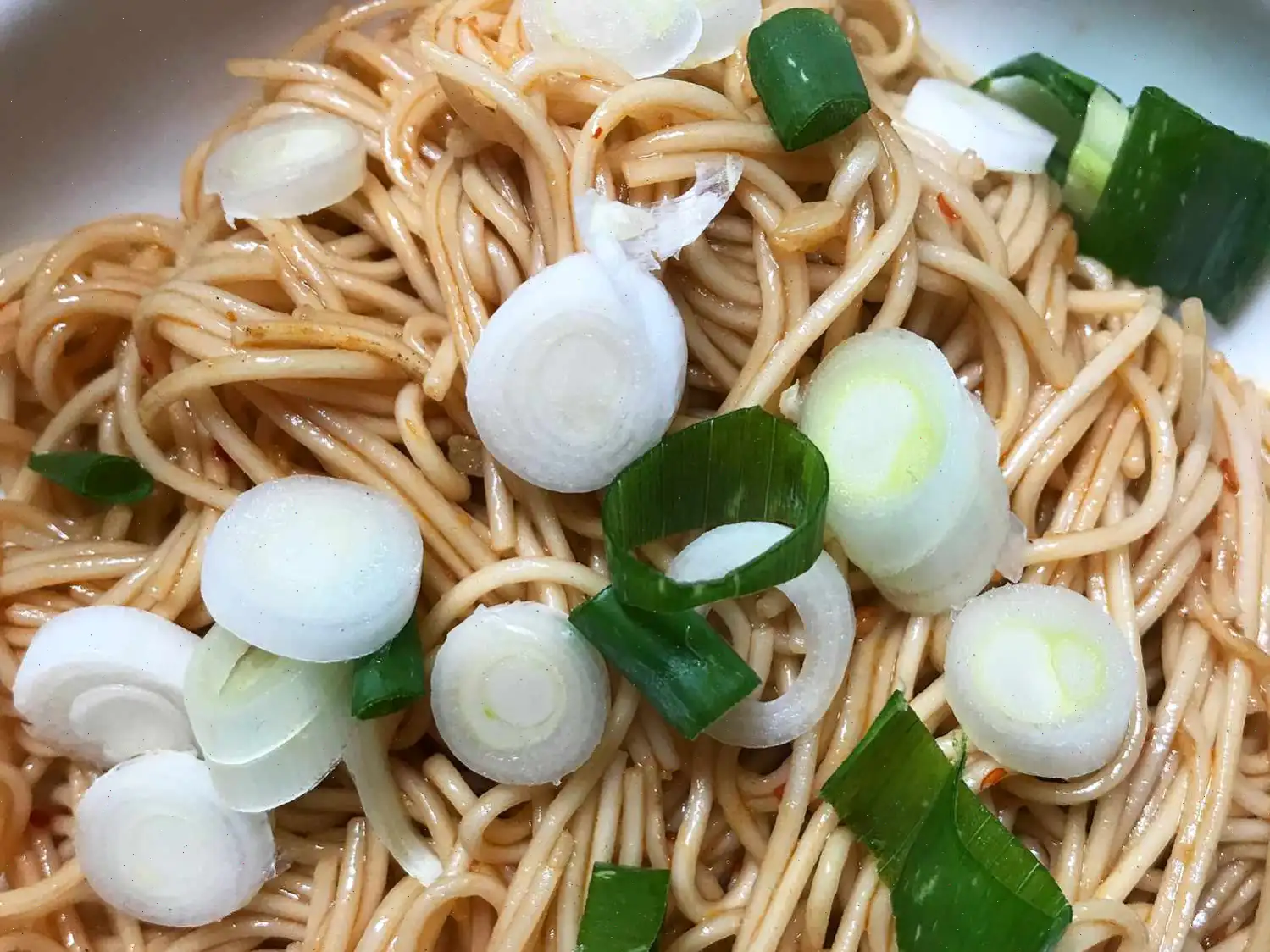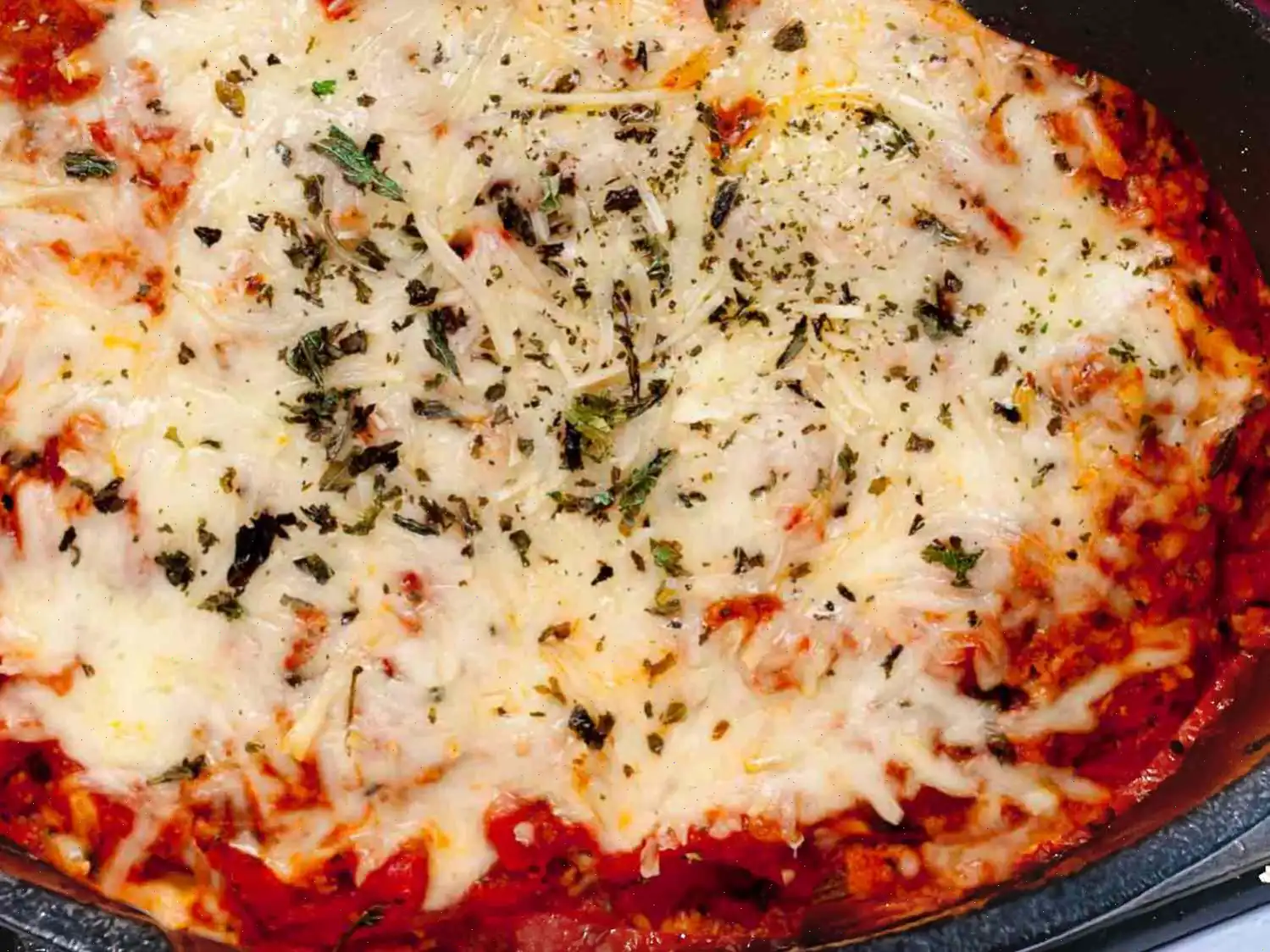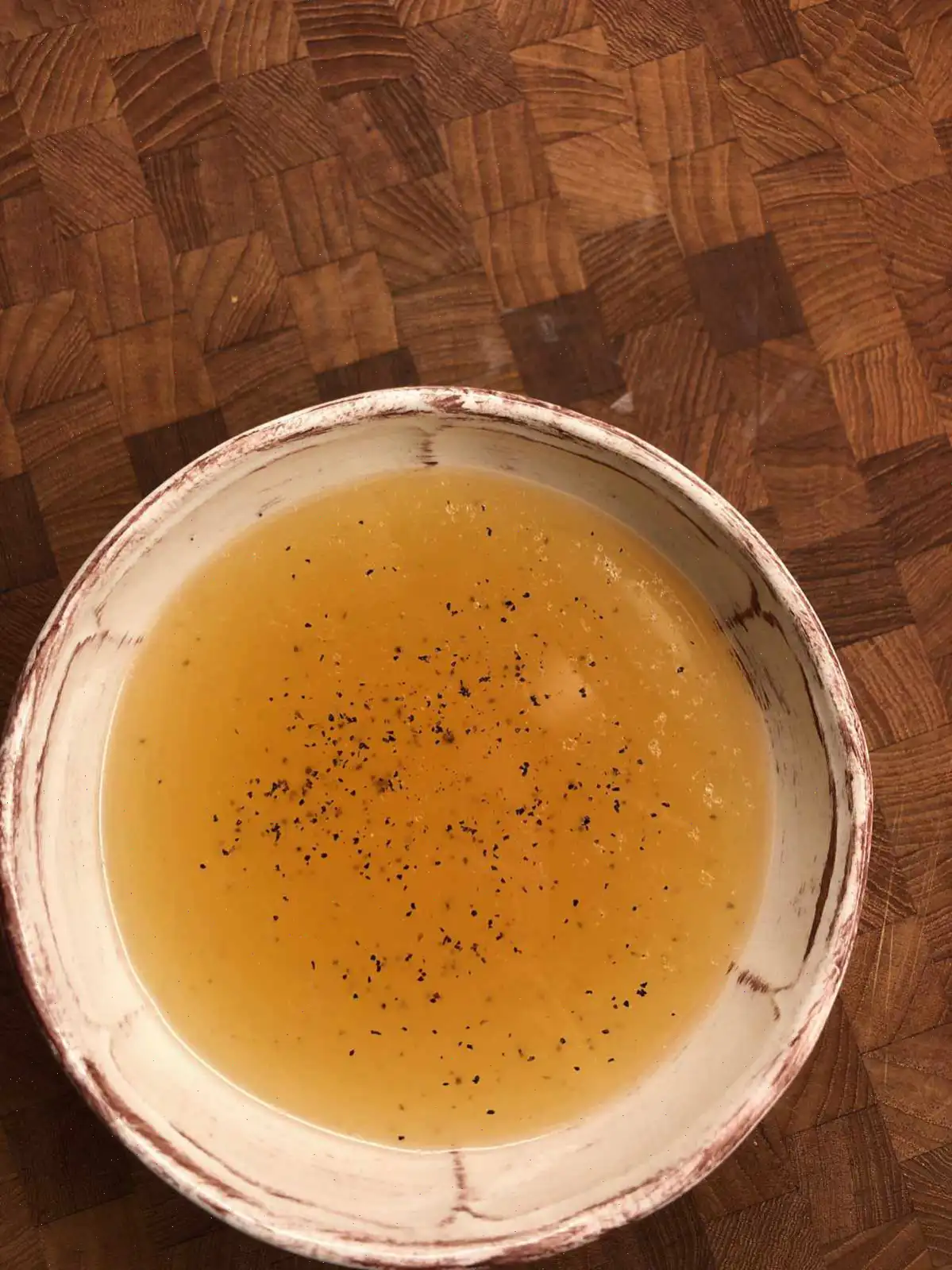
Quick Chinese-Style Vermicelli (Rice Noodles) Recipe
Rice Noodles with Soy and Chili Sauce
This simple yet flavorful recipe is perfect for a quick and satisfying meal. The tender rice noodles are coated in a savory sauce with a hint of heat from the chili, finished off with fresh green onions for added crunch.
Ingredients
- 1 (8 ounce) package dried rice noodles
- 2 tablespoons vegetable oil
- 1 clove garlic, minced
- 1 tablespoon soy sauce
- tablespoon chili sauce
- Salt and pepper to taste
- 1 green onion, chopped
Directions
Step 1: Fill a large pot with water and bring to a rolling boil. Stir in the rice noodles and return to a boil. Cook the noodles until al dente, approximately 2 to 3 minutes. Be careful not to overcook them, as they can become mushy. Drain the noodles well.
Step 2: While the noodles are cooking, heat the vegetable oil in a large skillet over medium heat. Add the minced garlic and saut until it becomes tender and fragrant.
Step 3: Add the drained noodles to the skillet with the garlic. Stir well to combine and coat the noodles with the oil and garlic.
Step 4: Season the noodles with soy sauce, chili sauce, salt, and pepper. Stir to evenly distribute the sauces and spices throughout the noodles.
Step 5: Remove from heat and sprinkle with the chopped green onions for a fresh, crunchy finish. Serve immediately and enjoy!
Nutrition Facts (per serving)
| Nutrition | Amount | % Daily Value |
|---|---|---|
| Calories | 271 | - |
| Total Fat | 7g | 9% |
| Saturated Fat | 1g | 6% |
| Sodium | 357mg | 16% |
| Total Carbohydrates | 48g | 17% |
| Dietary Fiber | 1g | 4% |
| Total Sugars | 0g | - |
| Protein | 2g | 5% |
| Vitamin C | 1mg | 1% |
| Calcium | 15mg | 1% |
| Iron | 1mg | 3% |
| Potassium | 47mg | 1% |
Note: Percent Daily Values are based on a 2,000 calorie diet. Your daily values may be higher or lower depending on your calorie needs.
Vermicelli rice noodles are a staple in many Asian cuisines, especially in Chinese and Southeast Asian dishes. These quick-cooking rice noodles are versatile and can be paired with a wide variety of ingredients, from vegetables to proteins. This recipe offers a simple yet delicious way to enjoy them with a flavorful soy-based glaze.
History and Origins
Vermicelli rice noodles have a long history in Chinese and Southeast Asian cooking. Originally, they were made from rice flour, making them a gluten-free alternative to wheat noodles. The use of rice-based noodles dates back over a thousand years in China, where they became popular due to the abundance of rice and the ease of their preparation. The dish featured here is influenced by the traditional Chinese style of stir-frying noodles with simple seasonings like soy sauce and chili, a method that highlights the natural flavors of the ingredients.
Regional Variations
While the dish is commonly associated with Chinese cuisine, it is enjoyed across various regions in Asia, each with its own twist. In Vietnam, for example, rice noodles are often served cold in refreshing salads or in aromatic broths. In Thailand, they may be stir-fried with a variety of fresh herbs and lime for a tangy flavor profile. Chinese-style stir-fried rice noodles, however, are typically prepared with minimal ingredients, allowing the noodles to shine with the savory essence of soy sauce and the heat of chili sauce.
What Makes It Different?
This particular Chinese-style vermicelli recipe stands out for its simplicity and speed. The noodles are quickly boiled and stir-fried with garlic, soy sauce, chili sauce, and green onions, making it a perfect side dish or light meal. Unlike other noodle dishes that may feature heavy sauces or broths, this recipe keeps things light, focusing on the natural taste of the noodles with just enough seasoning to enhance their flavor. This contrasts with other Asian noodle dishes like Pad Thai or Pho, which often incorporate a complex combination of herbs, spices, and broth.
Where Its Typically Served
Quick Chinese-Style Vermicelli is often served as a side dish in Chinese restaurants, typically accompanying stir-fried meats or vegetables. In China, noodle dishes are an important part of many meals, and they are often enjoyed during festivals or as part of a family meal. Outside of China, this dish can be found in many Asian eateries globally, especially in places with large Chinese or Southeast Asian communities. The dish is usually eaten for lunch or dinner and can also be served as a quick and satisfying snack.
Interesting Facts
- Rice vermicelli noodles are sometimes called "rice sticks" in certain regions of Southeast Asia.
- The noodles are naturally gluten-free, making them suitable for people with gluten intolerances.
- Rice noodles are believed to have been first developed during the Tang Dynasty (618-907 AD) in China, although their exact origin is still debated among food historians.
- In traditional Chinese culture, noodles symbolize longevity, making them a popular choice for birthday celebrations and New Year festivities.
- This quick and easy noodle dish is a great base for adding your favorite protein or vegetables, allowing for endless customization. Common additions include shrimp, chicken, tofu, or stir-fried vegetables.
FAQ about Quick Chinese-Style Vermicelli (Rice Noodles) Recipe
Comments
Ruth Gonzalez
09/20/2022 02:35:37 AM
A fantastic starting recipe! I boosted the soy sauce, chili sauce, and garlic by threefold. Additionally, I incorporated fresh ginger and toasted sesame oil. I then threw in whatever veggies I had on hand - carrots, broccoli, and cilantro. Oh, and I decided to toss in some scrambled egg as well. Just be cautious of the noodle cooking time as they can turn mushy in no time.
Scott Jones
08/23/2023 10:31:31 PM
My kids and I absolutely loved this recipe after making a few adjustments as recommended - we doubled the sauces and added extra veggies.
Rachel Jackson
03/26/2024 04:12:55 AM
Absolutely adored it.
Jerry Sanchez
09/24/2024 10:41:48 PM
This recipe turned out to be too dry and was overall quite disappointing.








